Most people experience chickenpox at least once in their lifetime, as it is a highly contagious virus. Although it is a single occurring episode, it may lead to long-lasting effects, including chicken pox scars. Adults want to reduce chicken pox scars, especially when they affect areas on their faces. Chicken pox scar treatment takes time - but you can get rid of chicken pox scars faster and more effectively with the dermatologist-recommended best practices described in this article.
Quick facts about chicken pox scars in adults

Chicken pox is caused by primary infection with the varicella-zoster virus. It usually begins as itchy red papules progressing to vesicles on the stomach, back and face, and then spreading to other parts of the face. The blisters clear up within one to three weeks but may leave scars. The two major causes of chicken pox scars are due to two factors:
-
Excessive scratching damages the skin and leaves deep wounds.
-
Skin inflammation which leads to indented scars
As it's harder to heal a scar after many years have passed, the best time to treat a scar is immediately after it heals. The face, neck, and back are prominent areas of getting chickenpox scars. You can reduce the chance of permanent scarring by helping it heal properly and keeping bacteria out.
Is there a cure for chicken pox scars?
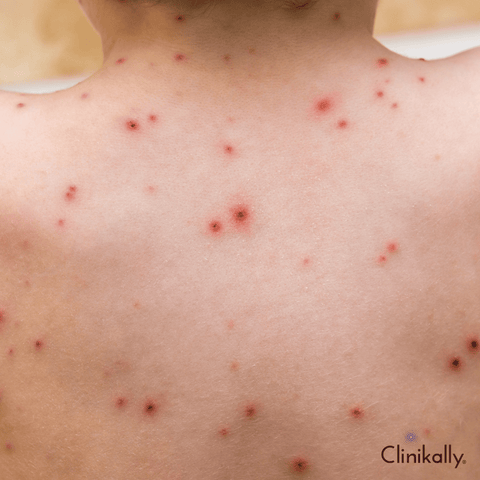
Some chicken pox scars fade out with time, but the stubborn ones persist and become permanent unless you seek some treatment. If you have residual scarring from chicken pox, a suitable chicken pox scar removal cream or other medical intervention can help smoothen the skin effectively. Coconut oil is among the oldest known natural cures, while aloe vera and Vitamin E are also available options.
Many treatments are available to help remove chickenpox scars. Home remedies may help people with mild scars, while medical treatments like excision and laser treatment are available for more severe cases. Let's take a more detailed look at some treatment plans for chicken pox-related scarring.
It's best to consult a dermatologist to understand the nature of your scarring and find the best solution to remove the chicken pox scars. You can get an online dermatologist consultation on Clinikally just a few clicks - with leading dermatologists who provide a personalised treatment plan according to your specific skin concern at your chosen time!
Home remedies to reduce chicken pox scars naturally
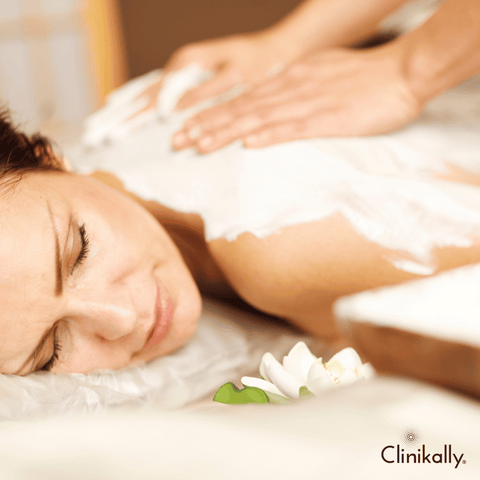
Natural treatment options like aloe vera, Vitamin E, jojoba oil, cocoa butter, argan oil, coconut oil, and shea butter help relieve chicken pox symptoms and prevent skin infections. These home remedies are inexpensive and do not cause any discomfort or side effects.
Best chicken pox scar removal creams
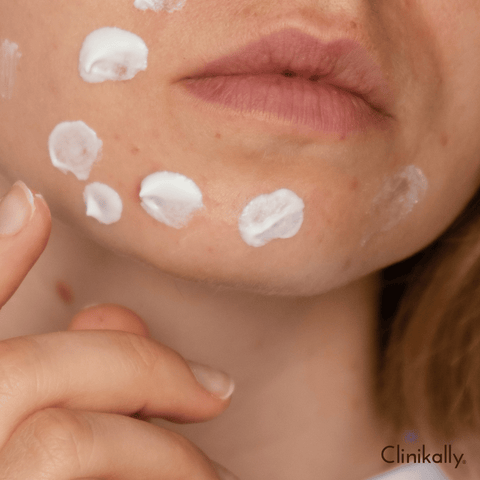
Several topical agents are being used for scar improvements, such as topical silicone gel sheeting and tretinoin creams. Chicken pox scars are typically circular indentations of the skin that may also be discoloured. They look very similar to acne scars. Look for specific ingredients like Retinol and Glycolic acid, which are common in creams and ointments for acne scars.
These products can help reduce the appearance of scars. However, these are ineffective on deep-pitted chicken pox scars.
Filler and laser treatment for chicken pox scars
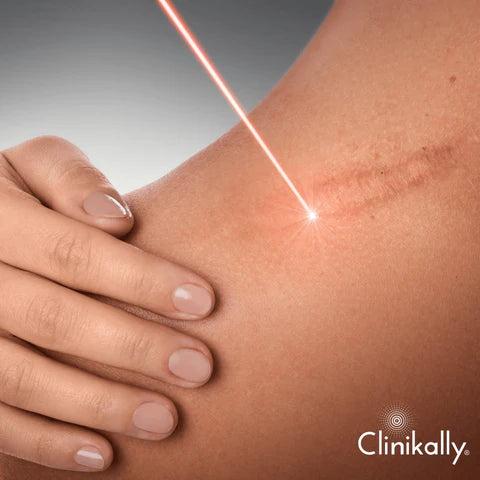
Depending on the nature and severity, it is easy to treat chicken pox scars with filler or laser treatments. Some of the most popular scar treatments for chickenpox include:
#1 Microneedling
Microneedling is one of the safest treatments available for chickenpox scars. Skin micro needling accelerates the process of skin regeneration through the creation of several micro injuries, which emerge when deeply punctured with very thin needles.
#2 Microdermabrasion
Microdermabrasion (MDA) is a minimally invasive epidermal resurfacing procedure where abrasive crystals are propelled against the skin under the control of a handheld vacuum system. The crystals cause gentle mechanical abrasion to the skin, which ultimately removes the stratum corneum layer of the epidermis and new epidermis forms with enhanced cosmesis.
#3 Chemical peelings
Chemical peeling is the process of applying chemicals to the skin to destroy the damaged outer layers, allowing the skin to recreate itself.
#4 Dermal fillers
Dermal fillers involve filling the pockmarks with natural or synthetic ingredients to make them level with the surrounding skin.
#5 Lasers
This procedure involves using laser light to diminish the pigment in darkened scars and promote the production of new collagen in deep layers of skin to help smooth out depressions.
#6 Excision and scar revision surgery
This procedure involves surgically removing the chicken pox scar with a special device. The skin around the punched area is stitched back together for softer skin.
#7 Combination treatments
Depending on your history, your physician may recommend one or combination of the above treatments.
How to prevent chicken pox scars
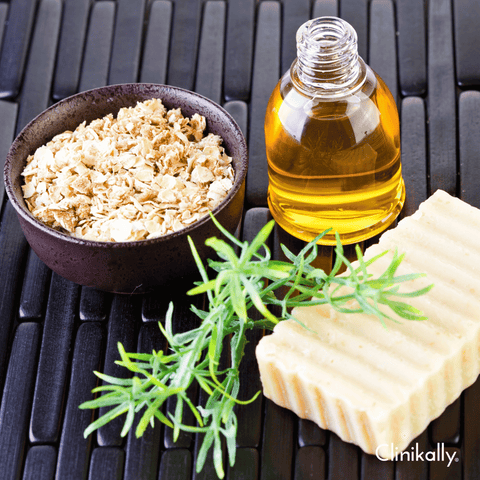
During a chickenpox outbreak, there are certain preventive measures that one can take to avoid the formation of scars
-
Avoid the urge to scratch as much as possible and try to keep fingernails trimmed.
-
Dab or pat a soothing lotion with calamine lotion or aloe vera onto the blisters.
-
Topical silicone gel sheets reduces itching and discomfort and effective in scar management.
-
Cool bath with added baking soda, uncooked oatmeal or colloidal oatmeal may help relieve itching.
-
If you do scratch your blisters, wash your hands with soap and water for at least 20 seconds.
All these must only be done after a dermatologist visit and avoid anti-itch medication without physician consultation. Besides dermatologist recommendations, you can also follow some healthy skincare tips for women and men so that your chicken pox scars will heal fast without leaving any marks.
Reduce chicken pox scars with the right steps!
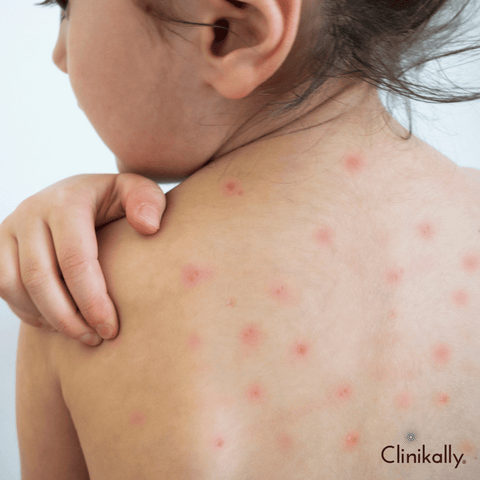
Chicken pox scars can be challenging to treat, but with the right skin assessment and medical aesthetic guidance, you can dramatically reduce the appearance of chicken pox scars. There are many treatment options available but you can also consult a dermatologist on Clinikally before trying any product or treatment as they have the best experiences with scars and recommend the most suitable option based on your unique skin condition.
Best chicken pox scar removal creams
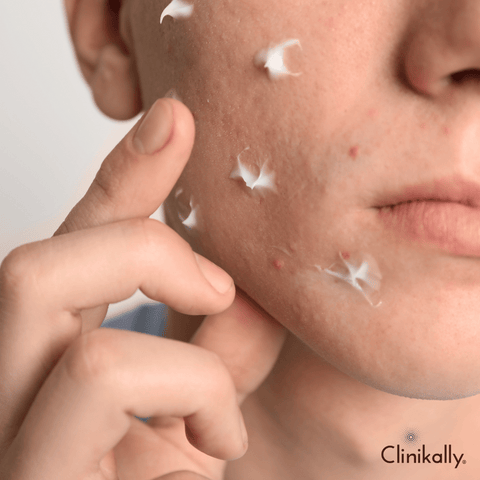
There is no single cream that entirely eliminates chickenpox scars. However, several lotions and treatments may help reduce the look of chickenpox scars. Individual responses to treatments can vary, so it's always a good idea to visit a dermatologist for personalised guidance. Here are some alternatives that could be suggested:
-
Medicated Creams: Dermatologists may advise patients to use over-the-counter or prescription creams containing hydroquinone, retinoids, alpha hydroxy acids (AHAs), or silicone gel. These can help reduce the appearance of scars over time.
-
Vitamin E Cream/Oil: Vitamin E is frequently used topically to potentially reduce scar visibility. It is available in cream or oil form and may help moisturise the skin, gradually improving the appearance of scars.
-
Onion Extract Creams: Some research suggests that creams containing onion extract may help to reduce the appearance of scars. Scar treatment products containing onion extract, such as Mederma, are popular.
-
Corticosteroid Creams: Dermatologists may prescribe corticosteroid creams or injections to help flatten and soften raised or keloid scars.
-
Laser Therapy or Dermabrasion: Dermatological procedures such as laser therapy, microdermabrasion, or chemical peels may be recommended for more severe or persistent scars. These procedures aid in the resurfacing of the skin and the reduction of scarring.
-
Microneedling: This treatment uses tiny needles to create controlled micro-injuries in the skin, stimulating collagen production and potentially reducing scar appearance.
It is important to remember that no cream can ever fully remove scars, so set reasonable expectations. Additionally, make sure a new cream or treatment is appropriate for your skin type and scar type by consulting a dermatologist or other healthcare provider before using it. Based on your unique circumstances, they can advise on the best course of action and discuss any possible risks or side effects of the treatment.
The Psychological Impact of Chicken Pox Scars

Chickenpox scars can have various psychological effects on individuals, depending on factors such as scar severity, the individual's self-perception, cultural influences, and personal experiences. Here are some of the psychological consequences of chickenpox scars:
-
Self-esteem and Body Image: Scars, especially those that are visible, can have an impact on a person's self-esteem and body image. They may be self-conscious about their looks, especially if the scars are on their face or other visible portions of the body.
-
Social Anxiety and Confidence: Scarring can cause social anxiety or a lack of confidence in public. Individuals may feel uneasy or afraid to meet new people, attend social gatherings, or participate in activities that draw attention to their scars.
-
Psychological Distress: Chickenpox scars can cause psychological anguish in some people, leading to feelings of despair, anxiety, or even solitude. Concerns about one's appearance and the perceived judgement of others can have a substantial impact on one's mental health.
-
Impact on Relationships: Scarring might affect personal relationships. Individuals might feel hesitant about forming new relationships or struggle with intimacy due to concerns about how others perceive their scars.
-
Negative Body Image Perception: Scars might contribute to a bad self-perception. This unfavourable body image may lead to an obsession with beauty and may have an influence on general mental health.
-
Impact on Daily Life: Chickenpox scars may influence daily life activities, influencing profession choices, wardrobe choices, and even involvement in specific social or recreational activities in severe situations where the psychological impact is profound.
It's important to recognise that the psychological impact of scars differs greatly among people. Some people may not mind their scars, while others may find them upsetting. Seeking help from friends, family, or mental health specialists can help you cope with the psychological effects of chickenpox scars. Furthermore, dermatological treatments and counselling can help with both the physical appearance of scars and the psychological discomfort that comes with them.
Coping strategies for skin-related self-esteem issues

Dealing with skin-related self-esteem issues, such as those caused by chickenpox scars or other skin diseases, can be difficult. Here are some coping tactics that may help you boost your self-esteem and manage the psychological impact of skin concerns:
-
Seek Professional Assistance: Consultation with a dermatologist or skin specialist is essential. They can offer appropriate treatment options for improving scar appearance or managing skin conditions, which may relieve some of the psychological distress.
-
Self-Compassion: Be gentle with yourself. Recognise that scars or skin conditions do not define your worth as a person. Self-compassion can be practised by speaking kindly to yourself and challenging negative self-talk.
-
Focus on Overall Health: Develop healthy habits that promote overall well-being, such as regular exercise, a balanced diet, adequate sleep, and stress management techniques such as meditation or mindfulness. Skin appearance and mental well-being can both benefit from good health.
-
Find Support: Surround yourself with supportive friends, family, or support groups where you can freely share your experiences and feelings. It can be reassuring and empowering to talk to others who have gone through similar experiences.
-
Create Positive Affirmations: Make positive affirmations that reinforce self-acceptance and confidence. Repeat these affirmations on a regular basis to combat negative thoughts about your appearance.
-
Learn Makeup Techniques: If you are comfortable doing so, learn makeup techniques to help conceal scars or skin imperfections. There are numerous makeup tutorials available on the internet that are specifically designed to cover scars or blemishes.
-
Wear Comfortable Clothes: Wear clothes that make you feel at ease and confident. Dressing in a way that makes you feel good can boost your self-esteem.
-
Gratitude Practise: Concentrate on the aspects of your life for which you are grateful. Shifting your attention to positive aspects can help reduce the importance of perceived flaws.
-
Therapy and Counselling: Seek therapy or counselling from a mental health professional who specialises in body image issues. Therapy can help you develop coping strategies and challenge negative thoughts.
-
Set Achievable Goals: Set attainable goals for yourself. Concentrate on personal development and accomplishments that are not solely based on physical appearance.
It takes time to develop self-esteem and deal with skin-related self-esteem issues. If these problems have a substantial negative influence on your quality of life or mental health, it is critical to be patient with yourself and seek professional assistance.
Navigating Post-Chicken Pox Skincare

After recovering from chickenpox, it is critical to take care of your skin to aid in the healing process and reduce the appearance of scars. Here are some skincare recommendations for people who have had chickenpox:
-
Keep Your Skin Clean: Maintain good hygiene by gently cleansing your skin with a mild cleanser. Scrubbing the affected areas may irritate the skin and potentially worsen scarring.
-
Moisturise on a regular basis: To keep the skin hydrated, use a gentle, fragrance-free moisturiser. Moisturising aids in the maintenance of the skin barrier and can aid in the healing process.
-
Avoid Scratching: Avoiding the urge to scratch chickenpox blisters is critical for avoiding scarring. Scratching can cause skin damage and make scarring more likely.
-
Calamine Lotion or Oatmeal Baths: Calamine lotion can help relieve itching and dry out blisters. Oatmeal baths can also help relieve itching and calm the skin.
-
Avoid Sun Exposure: Keep the healing skin out of direct sunlight, as UV rays can exacerbate scarring. If you must go outside, use a broad-spectrum sunscreen with an SPF of 30 or higher.
-
Scar Reduction Treatments: After the chickenpox blisters have healed, consider scar reduction treatments such as silicone gel sheets or creams containing ingredients such as onion extract, vitamin E, or hydroquinone. These treatments may help scars fade over time.
-
Consult a Dermatologist: If you are worried about scarring or want to learn more about scar management, see a dermatologist. They can recommend specific treatments or procedures based on your skin type and scarring severity.
-
Healthy Diet and Hydration: Maintain a nutrient-dense diet and remain hydrated. Proper diet and hydration promote overall skin health and repair.
-
Be Patient: Keep in mind that skin healing takes time. Even if scars are visible at first, they may diminish over time. Patience and consistent skincare practises are required to manage post-chickenpox skin.
-
Avoid Smoking: If you smoke, think about stopping or cutting back. Smoking can slow the healing process of the skin and contribute to more visible scars.
Always listen to your body and provide your skin with the attention it needs while recovering. Seek medical attention right away if you see any signs of infection or severe redness, or if the scars do not improve. A dermatologist can give you personalised advice and prescribe treatments to help your skin heal and scar less.
Daily skincare routines after chicken pox
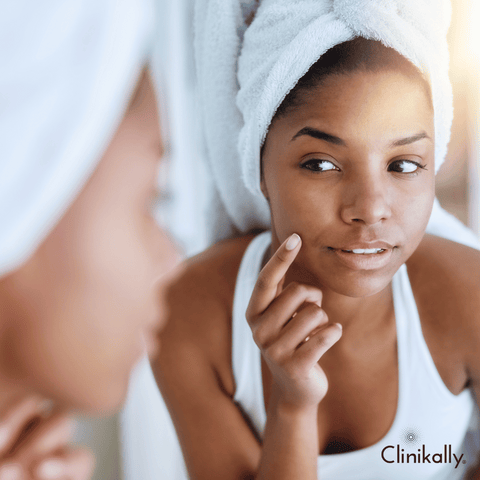
After recovering from chickenpox, it is critical to establish a daily skincare practise to aid skin healing and limit the possibility of scarring. Here's a gentle skincare routine to follow:
-
Cleansing: Wash your face twice a day (morning and evening) with a mild, fragrance-free cleanser to remove impurities and excess oil without irritating the skin. Avoid rubbing your skin dry by gently patting it dry with a soft towel.
-
Moisturising: Use a gentle, hypoallergenic, non-comedogenic moisturiser that is appropriate for your skin type. This keeps the skin hydrated and aids in the healing process. After cleansing, or whenever your skin feels dry, apply this moisturiser.
-
Sun Protection: Even if you are indoors, protect your skin from harmful UV rays by applying a broad-spectrum sunscreen with SPF 30 or higher. UV rays can aggravate scars and slow the healing process. If you are going to be outside, or if you have been sweating or swimming, reapply sunscreen every two hours.
-
Avoid Harsh Skincare Products: Avoid using harsh skincare products that contain alcohol, fragrances, or exfoliating ingredients like salicylic acid or retinoids until your skin has fully recovered. These can irritate the skin and cause it to heal more slowly.
-
Scar Care: Once the chickenpox blisters have healed, scar-reducing treatments such as silicone gel sheets or creams containing onion extract, vitamin E, or hydroquinone may be used. Follow the instructions carefully and be patient, as scar healing can take time.
-
Hydration and Diet: Drink plenty of water to stay hydrated, which helps with overall skin health. A healthy diet rich in fruits, vegetables, and antioxidants can also help with skin healing.
-
Avoid Scratching or Picking: To avoid further irritation, infection, and scarring, avoid scratching or picking at scabs or healing skin.
-
Consult a Dermatologist: If you are worried about scarring or need personalised skincare advice after chickenpox, see a dermatologist. They can make recommendations for specific products or treatments based on your skin type and needs.
Keep in mind that every person has a different skin type, so you should adjust your skincare regimen according to how your skin is reacting to the treatments and products. Be patient, as skin healing and scar reduction are time-consuming processes. Consult a doctor right away if you observe any infection symptoms or if the scars are not getting better.
Sun protection and chicken pox scar prevention
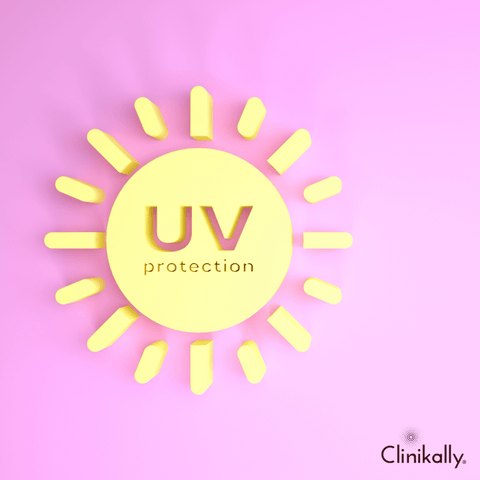
Sun protection is critical in preventing chickenpox scars from becoming more visible or darker as a result of UV exposure. Here are some key considerations to remember when it comes to sun protection and scar prevention:
-
UV Protection: UV radiation can make scars appear worse by darkening or making them more visible. To avoid this, apply a broad-spectrum SPF 30 or higher sunscreen to the afflicted regions on a regular basis, especially if the scars are still healing or are new. If you're going to be outside, or if you've been sweating or swimming, reapply sunscreen every two hours.
-
Physical Protection: When spending time outdoors, consider wearing hats, long-sleeved clothing, and sunglasses to protect your skin from direct sunlight. This can be especially beneficial in shielding sensitive or recovering skin from UV harm.
-
Scar Healing and Sun Exposure: When possible, avoid exposing healed scars to direct sunlight. When new scars are exposed to the sun, they are more vulnerable to UV damage and can take longer to fade. To preserve scars, keep them covered or use sunscreen on a regular basis.
-
Scar-Specific Sunscreen: Some sunscreens are intended specifically for scar treatment and may contain chemicals that help minimise the appearance of scars while also offering sun protection. These products can be used as part of an overall scar treatment regimen.
-
Consistent Sun Protection: Continue to protect the skin from UV radiation even after scars have formed. Scars can be photosensitive for an extended period of time, and continued protection can help reduce their visibility over time.
-
Consult a Dermatologist: Consult a dermatologist if you are concerned about the effect of sun exposure on chickenpox scars or want specialised advice on scar prevention. They can prescribe sunscreen and scar care products that are suited for your skin type and scar condition.
You can help prevent chickenpox scars from worsening due to sun exposure and support the scar reduction process by incorporating sun protection into your daily routine and taking steps to shield healing or mature scars from UV rays.
Understanding the Healing Process of Chicken Pox Scars
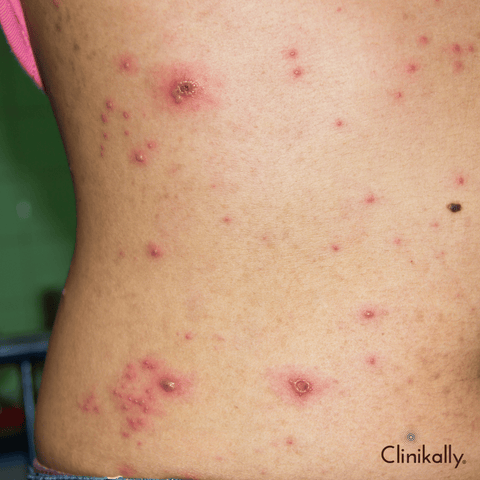
The healing of chickenpox scars comprises numerous stages, and scar appearance might change over time. Here's a high-level description of the healing process and the stages of chickenpox scar formation:
-
Formation of Chickenpox Lesions: The emergence of red, itchy pimples or blisters on the skin is typical of chickenpox. Papules, vesicles (fluid-filled blisters), pustules, and crusting are some of the stages that these lesions go through.
-
Healing of Blisters and Crusting: When the blisters dry out, they produce crusts or scabs, which protect the underlying skin as it heals. To avoid further skin damage and scarring, avoid scratching or picking at these scabs.
-
Resolution of Acute Symptoms: As the lesions heal, the initial symptoms of chickenpox, such as fever and extreme itching, gradually fade.
-
Scar Formation and Evolution: After the scabs break off, the skin near the site of previous blisters may seem reddish or discoloured. This discoloration will disappear with time, but in certain situations, it will lead to scar formation.
-
Types of Chickenpox Scars: Atrophic scars are depressed or pitted scars caused by the loss of underlying skin tissue during healing. Those who are predisposed to keloid formation are more likely to develop raised or thickened scars. These scars are not limited to the lesion's initial location.
-
Scar Maturation and Remodeling: Chickenpox scars can change over time as part of the body's natural healing process. Scars may appear more noticeable, red, or pigmented at first, but gradually flatten and disappear over time.
-
Scar Management: There are a number of skincare techniques and scar reduction procedures that can help lessen the visibility of chickenpox scars. Depending on the kind and extent of the scars, these treatments could involve silicone sheets, topical creams, laser therapy, microneedling, chemical peels, or steroid injections.
It's vital to note that the healing process and scar formation differ from person to person. Scarring can be influenced by factors such as individual skin type, the severity of the chickenpox infection, scratching or picking at lesions, and good wound care practises. Early intervention and correct skincare during and after the chickenpox infection, as well as consulting with a dermatologist or healthcare professional, can help manage the healing process and reduce the visibility of scars.
The timeline of chicken pox scar healing

The timeline for chickenpox scar healing can vary significantly among individuals based on several factors, including the severity of the infection, how well the lesions were managed during the acute phase, and individual skin healing capabilities. Here's a general timeline of the stages involved in chickenpox scar healing:
-
Initial Lesion Formation (Days 1-7): Chickenpox usually starts with red patches that proceed to fluid-filled blisters (vesicles). These blisters may last for several days, and additional lesions may emerge in waves during this time.
-
Crusting Stage (Days 7-14): The vesicles begin to dry and produce crusts or scabs, which protect the healing skin beneath. To prevent scarring, avoid scratching or picking at these scabs.
-
Healing Phase (Weeks 2-3): As the skin beneath heals, the scabs fall off gradually. During this stage, the skin at the site of previous lesions may still seem red or discoloured.
-
Scar Formation (Weeks to Months): The skin may show symptoms of scarring after the scabs have come off. Scars may appear red, elevated, or indented at first. The healing process continues, and scars may improve progressively over the next few months.
-
Maturation and Fading (Months to Years): Chickenpox scars can persist for a long time. Scars may appear more visible at first, but they tend to flatten and diminish over time. Scar maturation and fading can last for months or years, and some scars may fade over time.
It's important to note that while many chickenpox scars disappear dramatically over time, certain scars may persist or require extra treatment to be removed. Several factors, including the individual's skin type, the severity of the infection, good wound care during the acute phase, and the presence of underlying disorders influencing skin healing, can all influence the timeline of chickenpox scar recovery. Seeking the counsel of a dermatologist or other healthcare professional can assist in regulating the healing process and reducing the visibility of scars by using proper skincare and, if necessary, scar reduction therapies.
Factors that influence scar formation and healing

Many factors can affect the formation and healing of scars following an injury or skin condition, like chickenpox. Understanding these characteristics can aid in scar management and wound healing. The depth and severity of the wound or damage, wound care and therapy throughout healing, the individual's age, skin type and ethnicity, genetics and predisposition to scarring, underlying health issues, infection and inflammation, and sun exposure are all important considerations. Understanding these characteristics can assist individuals in taking proper actions to promote better wound healing and reduce scar visibility. Consultation with a dermatologist or other healthcare professional can provide tailored advice on scar prevention and management measures based on individual needs.


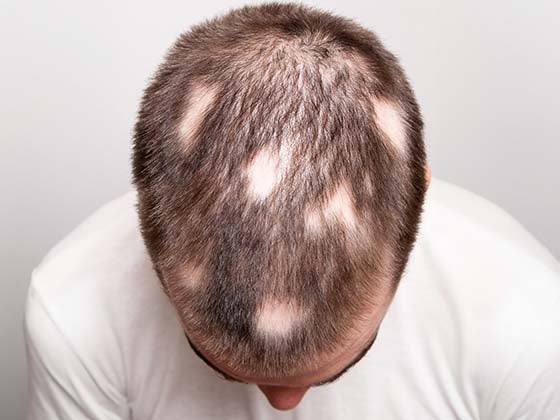







































3 comments
rohini
how to treat chickenpox scars on face
how to treat chickenpox scars on face
Ashu
Chickin pox scar
Chickin pox scar
Sheetal
Can I consult the doctor
Can I consult the doctor